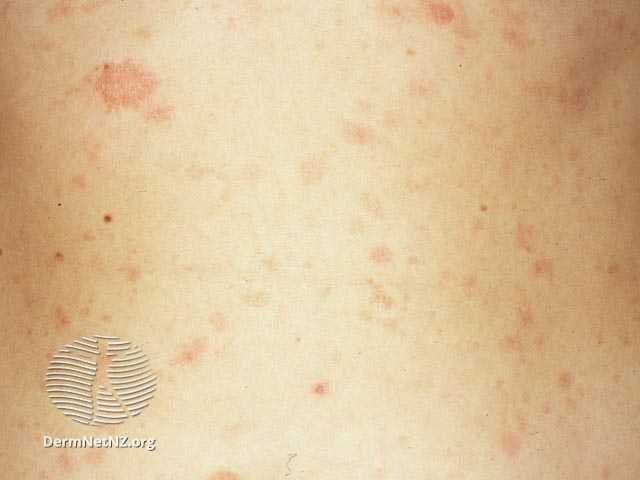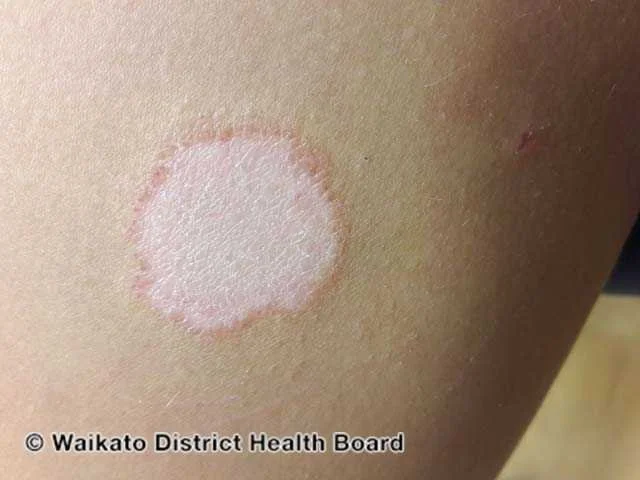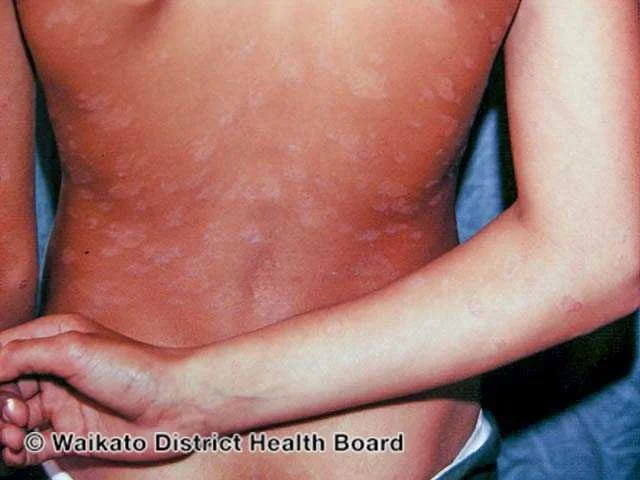
Pityriasis Rosea
Pityriasis rosea with the herald patch in the upper left, and several smaller scaly lesions on the trunk.
Credit: DermNet NZ
What is pityriasis rosea?
Pityriasis rosea is a widespread skin condition recognized for its distinctive rash. Often preceded by a single, larger red and scaly patch termed the "herald patch," it typically surfaces on the chest, back, or abdomen. Within days, the herald patch is followed by smaller, oval-shaped patches, predominantly on the chest and back. This rash is most commonly found in individuals ranging from children to young adults. Although it generally clears up on its own in 6-12 weeks, some opt for treatment to alleviate associated symptoms.
What causes pityriasis rosea?
The exact cause of pityriasis rosea remains uncertain, though it's thought to arise from a viral infection. Notably, occurrences seem to peak during the spring and fall seasons. There's a theory that herpes viruses 6 and 7, known culprits for infant roseola, might be involved in its reactivation. Moreover, influenza viruses and certain vaccines have been pinpointed as potential triggers.
What are the symptoms of pityriasis rosea?
It's not uncommon for those affected by pityriasis rosea to experience an upper respiratory tract infection prior to the rash's onset. The initial presentation, or the "herald patch," emerges on the chest, back, or abdomen, anywhere from 1–20 days before the rash spreads. This patch is oval, with a red or pink hue, often showcasing a scaly border, and spans 2-5 cm in size. Subsequent to this, a more generalized rash forms, consisting of smaller red, oval patches chiefly on the chest and back. While the legs might sometimes be affected, it's rare for the face, arms, hands, or feet to show signs. The rash's sensation can vary, being itchy for some, while others might not feel any itchiness.
How do I treat pityriasis rosea?
When managing pityriasis rosea, it's advised to:
Apply moisturizing creams regularly.
Use moisturizing cleansers during baths.
Get mild sun exposure, but do so judiciously.
Other treatment avenues include:
Antiviral medications, such as acyclovir.
Topical steroid creams or ointments to mitigate itching.
Phototherapy, especially for more extensive cases.
If you are pregnant and affected, it's imperative to consult your OB/GYN.
Pityriasis rosea can resemble ringworm when it first develops.
Credit: DermNet NZ
In patients with darker skin types, the pityriasis rosea can show up as lightening of the skin.
Credit: DermNet NZ



